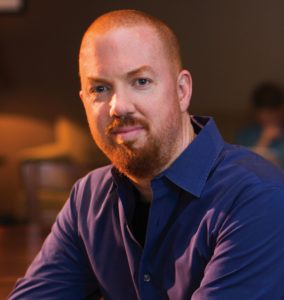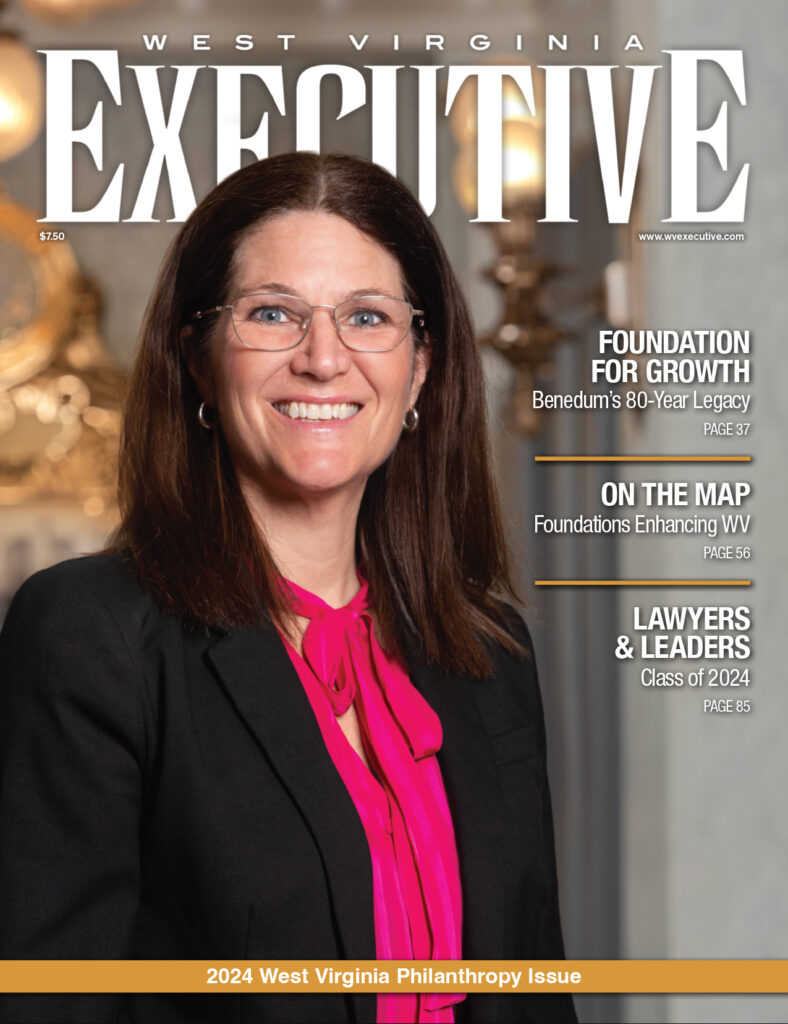By Samantha Cart
While researching for the article “Fighting for Life in West Virginia,” which appeared in the Winter 2017 issue of West Virginia Executive, I came across a true crime book called American Pain. When I realized it was written by John Temple, my senior capstone professor at the West Virginia University Reed College of Media, I purchased it on Amazon that same day and placed reading it on my to-do list for a later date.
I glossed through the pages of the book in preparation for writing the article, but as the story took shape, it became more about treatment and prevention and less about the epidemic itself. However, as soon as the issue was sent to the printer—and I could breathe again—I sat down and opened to page 1.
American Pain tells the story of the Florida pain management clinic by the same name, the largest of its kind during its peak in 2008-2009, and the role it played in facilitating the prescription drug epidemic that swept the nation.
I admittedly do a lot less leisurely reading now that I spend hours every day reading and editing magazine articles. However, I was immediately engrossed in American Pain. I couldn’t put it down. I followed my husband around our apartment, much to his dismay, reading shocking passages to him out loud.
Not only is the book masterfully written in my opinion, but the topic itself is enthralling. I started telling anyone who would listen about the story line. If I didn’t know better, I would have sworn the book was a work of fiction, that there was no way licensed doctors, legitimate businesses and nationally monitored pharmaceutical companies could get away with such egregious acts. But that’s what makes American Pain so compelling—knowing that every single word is true.
In two years, American Pain Owner Chris George made $40 million, and from 2008-2010, doctors in Florida purchased nine times more oxycodone than every doctor in the other 49 states combined. The FBI found that 53 American Pain patients died of overdoses in Florida alone, and that does not take into consideration that 90 percent of the pills prescribed by American Pain doctors were to out-of-state patients.
Now more than ever, as drug overdoses have surpassed car crashes as the leading cause of accidental death in the U.S., I believe every West Virginian should read American Pain, if for no other reason than it is a captivating read that will fuel your fire for fighting for the lives of fellow West Virginians.
In this Q&A, Temple answers questions on everything from what inspired his interest in the beginnings of the drug epidemic to how a true crime book comes to life.

John Temple, professor at the WVU Reed College of Media
How did you first become interested in the topic of prescription drug abuse in the U.S.?
For the last 10 years or so, I’ve been vaguely aware of it as both something in the news and something that seemed to be affecting more and more people I knew. I had friends who had problems or whose kids had problems, students who told me they were addicted to opioids or heroin. Opioids had gone from being a street drug to a major epidemic that cut across all demographics and geography, and I wanted to find out how and why.
As a writer, what are the first steps for writing a true crime book? How did you go about making the appropriate contacts, particularly with the FBI, and gaining permission to conduct interviews with Derik Nolan and Chris George?
The first steps I took was spending several months reading everything I could about both the larger issues about the opioid epidemic and also the major court case at the center of the book. I read thousands of news stories, government reports, academic papers and court documents until I felt I had a strong and deep grasp of the issues and the story itself.
Then I set about interviewing people, from experts to people who were involved in the case. For the latter, I thought of them in terms of three separate categories: the customers and their families, the people who built American Pain Clinic and the law enforcement people who brought them down. I wrote letters to a lot of people in prison and emails to everybody else and followed up. In the end, the toughest interviews to get were with the FBI and U.S. Attorney’s Office. They wanted to tell their stories but were restricted for a long time due to the fact that the case was being appealed. Eventually, after I completed a draft of the book, they finally got permission to speak to me, so I flew to Florida and spent some long days interviewing them.
What was it like interviewing Nolan and other sources for American Pain?
Fascinating. I spent months talking to Nolan, over email, phone and in person, and he ended up becoming one of the main characters in the book. He was in prison at the time, so we had a lot of restrictions, such as a 15-minute time limit on phone calls, an unwieldy prison email system and the fact that I couldn’t bring a recorder or even a notebook into the prison. But we developed a system that worked well.
How long did it take from start to finish to research, write and publish American Pain?
About three years.
What was it like interviewing Stacy Mason’s mother?
Amazing. She’s one of the most courageous people I’ve ever met. She lives in one of the most remote areas I’ve ever been to, on an isolated farm many miles away from the nearest town in the hills of eastern Kentucky. It was very difficult finding her house. I had a hard time understanding her, and vice versa, because our speech dialects were so different. But she really wanted to tell me about her son and what she did. I found it astonishing the lengths she went to find out what happened to her son, given the fact that she’d barely ever left Kentucky in her life.
Did you interview anyone from West Virginia for the book?
A couple of people, but no one who appeared prominently in the book. American Pain did have a lot of customers from West Virginia, including one of the more prominent death cases, but the largest proportion of their customers were from Kentucky, so for that and other reasons, I based a lot of the Appalachian part of the book in Kentucky.
How, if at all, do you continue to engage with this topic?
I do a lot of speaking and media appearances related to it. I do not plan to write another book about drugs at the moment—I want to look into other areas.
Are you still in contact with any of your sources?
I did a speaking engagement in Florida last month with one of the primary FBI agents on the case, and it was great to catch up with him. I email back and forth with Derik Nolan, who is still in prison.
How do you think the drug epidemic has changed since American Pain was published?
I think awareness has grown a lot since I began researching the book. At the beginning, I couldn’t understand why it wasn’t a bigger story. I think doctors are increasingly aware and concerned they might be making the epidemic worse, but we have a long way to go. There’s been a big switch from pills to heroin, for economic reasons, and the supply of heroin has increased to accommodate that demand.
As an educator yourself, what role do you think education and works similar to American Pain play in curbing drug addiction in the U.S.?
If we can spread awareness that painkillers and heroin are essentially the same drug, I think we’ll be on the right track. The epidemic began because doctors began over-prescribing narcotic painkillers. They are the gatekeepers. If they do their jobs right, many addictions can be headed off. Books and documentaries can definitely play a role in increasing awareness.
With your unique perspective, do you think the major players in this crime wave experience any feelings of regret? Do you think their time in prison will impact the way they live when they are released?
They certainly regret the fact that they’re serving lengthy prison sentences! I think they also sometimes feel bad about their role in the epidemic. But there are many other people who profited from the epidemic and walked away with money in their pockets, and sometimes I think it’s hard for the people who built American Pain to understand how it came to pass that they are among the very few people being held responsible for this epidemic. So they tend to feel sorry for themselves, I think.
If you’re asking whether prison will rehabilitate them, I don’t know. They’ll be middle-aged men when they get out, so I think they’ll be less likely to commit crimes for that reason.
How can the average American express their concerns about the lack of Drug Enforcement Administration regulations on pharmaceutical production?
Bring it up with any politicians or law enforcement officials you encounter. That’s what I do!
About the Author
Samantha Cart is the editor for Executive Ink, LLC and its publications. She holds bachelor’s and master’s degrees in journalism from West Virginia University. A resident of Birmingham, AL, she is a volunteer with the Jefferson County Alabama 4-H Youth Advisory Council and the Church of the Nazarene. Cart can be reached by email at sdc@wvexecutive.com.




1 Comment
Samantha,
Great review of a compelling book by Prof. John Temple! I couldn’t put it down either as my newspaper background (BSJ ’80) told me it was quite a story after the first pages. Thanks for spreading the word to fellow Mountaineers about this huge epidemic our nation is struggling to deal with. And harp to Sen. Joe Manchin every chance you get about this please!
Let’s Go Mountaineers!
David Baum ’80
Delaware Chapter president
WVU Alumni Association